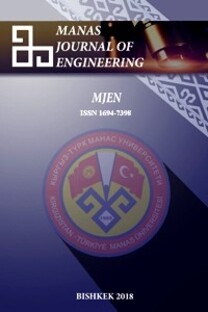A Two Dimensional Finite Difference Model for Predicting The Temperature Profiles During Microwave Heating of Foods Having Finite Cylinder Geometry
microwave, heating two-dimensional model,
___
- Lin, Y.E., Anantheswaran, R.C. & Puri, V.M. Finite element analysis of microwave heating of solid foods, Journal of Food Engineering,25, (1995), pp. 85- 112.
- Campanone, L.A., Zaritzky, N.E. Mathematical analysis of microwave heating process, Journal of Food Engineering,69, (2005), pp. 359- 368
- Yang, H.W. And Gunasekaran, S. Temperature profiles in a cylindrical model food during pulsed microwave heating. Journal of Food Science, 66(7), (2001), pp: 998- 1004.
- Zhou,L., Puri, V.M., Anantheswaran, R.C. & Yeh, G. Finite element modeling of heat and mass transfer in food materials during microwave heating – Model development and validation, Journal of Food Engineering,25, (1995), pp. 509- 529.
- Romano, V.R., Marra, F., Tammara, U. Modelling of microwave heating of foodstuff: study on the influence of sample dimensions with a FEM approach, Journal of Food Engineering,71, (2005), pp. 233- 241.
- Yang, H.W. & Gunasekaran, S. Comparison of temperature distribution in model food cylinders based on Maxwell equations and Lambert’s law during microwave heating. Journal of Food Engineering, 64, (2004), pp: 445- 453.
- Datta, A.K., Sumnu, G., Raghavan; G. S. V. Dielectric Properties in Foods, in Rao, M. A., Rizvi, S. S. H, Datta, A. K. (Eds). Engineering Properties of Foods, Third Edition, CRC Pres Taylor & Francis, Boca Raton, pp:505- 506, 2005.
- Padua, G.W. Microwave heating of agar gels containing sucrose, Journal of Food Science,58(6), (1993), pp. 1426- 1428.
- Oliveira, M.E. C., & Franca, A.S. Microwave heating of foodstuff. Journal of Food Engineering, 53, (2002), pp. 347- 359.
- Sakin, M. Modeling of cake baking process as simultaneous heat and mass transfer, PhD Thesis, Ege University, Institute of Natural and Applied Sciences, Branch of Food Engineering, Bornova, Izmir, 2005
- Sakin, M., Kaymak-Ertekin, F., & Ilicali, C. Heat and mass transfer simulation applied to convective oven cup cake baking, Journal of Food Engineering, 83, (2007), pp: 463-474.
- Carnahan, B., Luther, H.A., & Wilkes, J.O. Applied numerical methods .John Wiley & Sons. Inc., NY, pp:. 440-446, 1969.
- Cengel, Y.A. Heat Transfer a Practical Approach, 2nd Edition. Mc Graw-Hill., New York, pp: 216, 219, 2003.
- Gunesakaran, S., Yang, H-W. Effect of experimental parameters on temperature distribution during continuous and pulsed microwave heating, Journal of Food Engineering,78, (2007), pp. 1452-1456
- ISSN: 1694-7398
- Yayın Aralığı: 2
- Başlangıç: 2001
- Yayıncı: KIRGIZİSTAN-TÜRKİYE MANAS ÜNİVERSİTESİ
N. A.İSKENDER, - S.ÖRTÜCÜ, Y. AKSU
A.d. URDALETOVA, S.n. SKLİAR, S.k. KYDYRALİEV
- K.A.P.REZAEİEH, - B.GÜRBÜZ, - M.UYANİK
